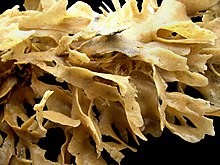
The Scorpaeniformes are a diverse order of ray-finned fish, including the lionfishes and sculpins, but have also been called the Scleroparei. It is one of the five largest orders of bony fishes by number of species, with over 1,320.

The Heteroptera are a group of about 40,000 species of insects in the order Hemiptera. They are sometimes called "true bugs", though that name more commonly refers to the Hemiptera as a whole. "Typical bugs" might be used as a more unequivocal alternative, since the heteropterans are most consistently and universally termed "bugs" among the Hemiptera. "Heteroptera" is Greek for "different wings": most species have forewings with both membranous and hardened portions ; members of the primitive sub-group Enicocephalomorpha have completely membranous wings.
Ophidiiformes is an order of ray-finned fish that includes the cusk-eels, pearlfishes, viviparous brotulas, and others. Members of this order have small heads and long slender bodies. They have either smooth scales or no scales, a long dorsal fin and an anal fin that typically runs into the caudal fin. They mostly come from the tropics and subtropics, and live in both freshwater and marine habitats, including abyssal depths. They have adopted a range of feeding methods and lifestyles, including parasitism. The majority are egg-laying, but some are viviparous.

Scorpaenoidei is a suborder of ray-finned fishes, part of the order Scorpaeniformes, that includes the scorpionfishes, lionfishes and velvetfishes. This suborder is at its most diverse in the Pacific and Indian Oceans but is also found in the Atlantic Ocean.

Sciurognathi is a suborder of rodents that includes squirrels, chipmunks, beavers, and many types of mice. The group is characterized by a specific shape to the lower jaw. In sciurognaths, the angular process of the jaw is in the same plane as the root of the incisors. This is in contrast to the suborder Hystricognathi where the angular process is outside the plane formed at the root of the incisor due to the presence of a shelf for muscle attachment.
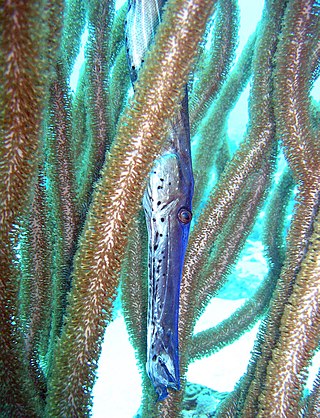
The Syngnathiformes are an order of ray-finned fishes that includes the sea moths, trumpetfishes and seahorses.

The name Prosorrhyncha is a name for a suborder of Hemiptera, comprising a grouping of the traditional taxon "Heteroptera" plus its sister taxon, the family Peloridiidae. There is no agreement on the status of this taxon, as there are two competing classifications regarding this branch of the Hemiptera; while some hemipterists follow this classification, it has by no means been accepted universally. See the Heteroptera article for the detailed discussion, and a comparison of the two taxoboxes.
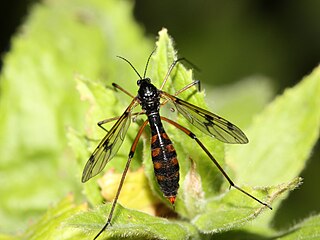
Ptychopteromorpha is a taxonomic group within the suborder Nematocera consisting of two uncommon families. In older classifications, these families were included within the infraorder Tipulomorpha, based on superficial similarities. The inclusion of the families Tanyderidae and Ptychopteridae was based on the foldability of the last tarsomere in males. Molecular studies show no close relationship between the Tanyderidae and the Ptychopteridae, and support for this grouping is limited.
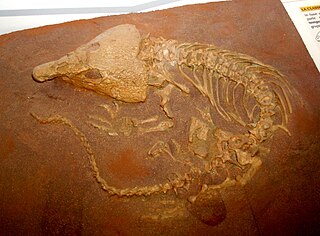
Captorhinida is a doubly paraphyletic grouping of early reptiles. Robert L. Carroll (1988) ranked it as an order in the subclass Anapsida, composed of the following suborders:

Feliformia is a suborder within the order Carnivora consisting of "cat-like" carnivorans, including cats, hyenas, mongooses, viverrids, and related taxa. Feliformia stands in contrast to the other suborder of Carnivora, Caniformia.
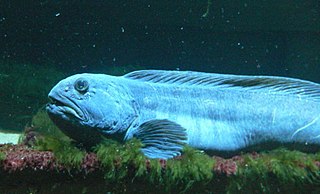
Zoarcoidei is a suborder of marine ray-finned fishes belonging to the order Scorpaeniformes. The suborder includes the wolffishes, gunnels and eelpouts. The suborder includes about 400 species. These fishes predominantly found in the boreal seas of the northern hemisphere but they have colonised the southern hemisphere.
Scrupariina is a suborder under order Cheilostomatida. The structure of the individual zooids is generally simple, with an uncalcified, flexible frontal wall. The obsolete sub-order Anasca previously included the members of this sub-order before being deprecated.

Flustrina is a suborder under the order Cheilostomatida of gymnolaematan Bryozoa.
Heintzosteus is an extinct genus of placoderm arthrodire fish, which lived during the Late Devonian period in Spitsbergen, Norway.

Paraneoptera or Acercaria is a superorder of insects which includes lice, thrips, and hemipterans, the true bugs. It also includes the extinct order Permopsocida, known from fossils dating from the Early Permian to the mid-Cretaceous.

Endeostigmata is a suborder of acariform mites. There are about ten families in Endeostigmata. The grouping is strongly suspected to be paraphyletic, containing unrelated early diverging lineages of mites.

Scombriformes is an order of bony fish containing nine families which were classified under the suborders Scombroidei and Stromateoidei, of the wider grouping known as Perciformes, Fishes of the World, 5th ed. (2016), recognised the order but subsequent workers have suggested that Scombriformes forms part of the larger Pelagiaria clade.

Ovalentaria is a clade of ray-finned fishes within the Percomorpha, referred to as a subseries. It is made up of a group of fish families which are referred to in Fishes of the World's fifth edition as incertae sedis, as well as the orders Mugiliformes, Cichliformes, and Blenniiformes. It was named by W. L. Smith and T. J. Near in Wainwright et al. (2012) based on a molecular phylogeny, but the authors suggested that the group was united by the presence of demersal eggs that are attached to a substrate. Some authors have used the ordinal name Stiassnyiformes for a clade including Mugiloidei, Plesiopidae, Blenniiformes, Atherinomorpha, and Cichlidae, and this grouping does appear to be monophyletic.

Neodermaptera, sometimes called Catadermaptera, is a suborder of earwigs in the order Dermaptera. There are more than 2,000 described species in Neodermaptera.

The Atherinomorpha is a clade of fishes in the superorder Acanthopterygii, the ray-finned fishes, consisting of three orders. The clade is ranked as an infraseries within the subseries Ovalentaria, which in turn is ranked within the wider Percomorpha clade.
